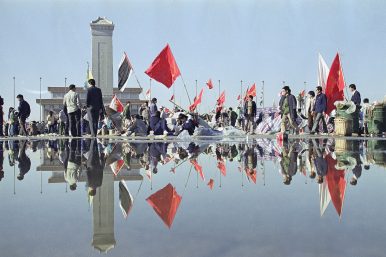By Emile Dirks
On June 4, 1989, the People’s Liberation Army stormed into Tiananmen Square in Beijing. For two months, tens of thousands of protesters had gathered there to call on China’s ruling Communist Party to enact political reforms. Within a day, these hopes lay crushed under the treads of the army’s tanks.
Yet however improbably, in the decades that followed, new forms of activism grew. By turns contentious and cooperative, activists won important victories for individuals and communities across China. Now, at a time of deepening repression under President Xi Jinping, we must have faith that they will continue to do so.
1989 was a watershed year for Chinese politics. The brutal massacre of hundreds – perhaps thousands – of unarmed protestors in June and the passage of the restrictive Law on Assemblies, Processions, and Demonstrations that October revealed the sharp limits of post-Mao reforms. Social controls were lifted and market forces unleashed, but in the realm of politics, no concessions could be made. Since then, no movement has approached the scale and audacity of the 1989 Tiananmen protests. Only the Falun Gong religious sect sought to build a national following outside of the Communist Party’s control. Their brutal repression following protests outside of government headquarters at Zhongnanhai in 1999 reminded the world that the Party would brook no challenge to its power. Many brave individuals continued to speak openly of human rights and democracy, among them Nobel Laureate Liu Xiaobo, rights lawyer Chen Guangcheng, and artist Ai Weiwei. The party rewarded them with imprisonment or exile.
Yet even in post-Tiananmen China, not all activism was met with such a heavy-handed response. Under the administration of President Hu Jintao and Premier Wen Jiabao (2003-2013), space was pried open for local activists and state-civil society partnerships. The Party had good reason to grant this space. In the age of market reform, China had grown too complex for the Party to govern alone. Layoffs swept state-owned enterprises, throwing millions out of work; peasant migrants poured into the factories of China’s eastern coast, creating a new urban underclass; social spending was slashed; inequality rose. The resulting problems of industrial pollution, crumbling rural education, and increasing labor unrest were mammoth. To tackle them, the Party sought partners in civil society. Groups that local authorities had once shunned or suppressed were now invited to help manage these complex issues.
These state-civil society partnerships spawned experimental activism, much of it grassroots. Unlike China’s internationally celebrated dissidents, these activists were often unknown beyond their communities. Yet in their multitude, they captured the diversity of China: migrant workers, peasants, journalists, and lawyers. As Beijing sought to shore up its legitimacy in the face of growing social discord, these activists’ desire for reform was encouraged, albeit inconsistently, by the Party itself. And while they often avoided the language of politics, they believed deeply in the potential for change. Migrant workers demanded China’s labor laws be upheld; peasants agitated against illegal land seizures; journalists investigated local corruption. Their work was often contentious. But even amid sporadic harassment and police crackdowns, they persisted and won small yet important victories for their causes.

No comments:
Post a Comment